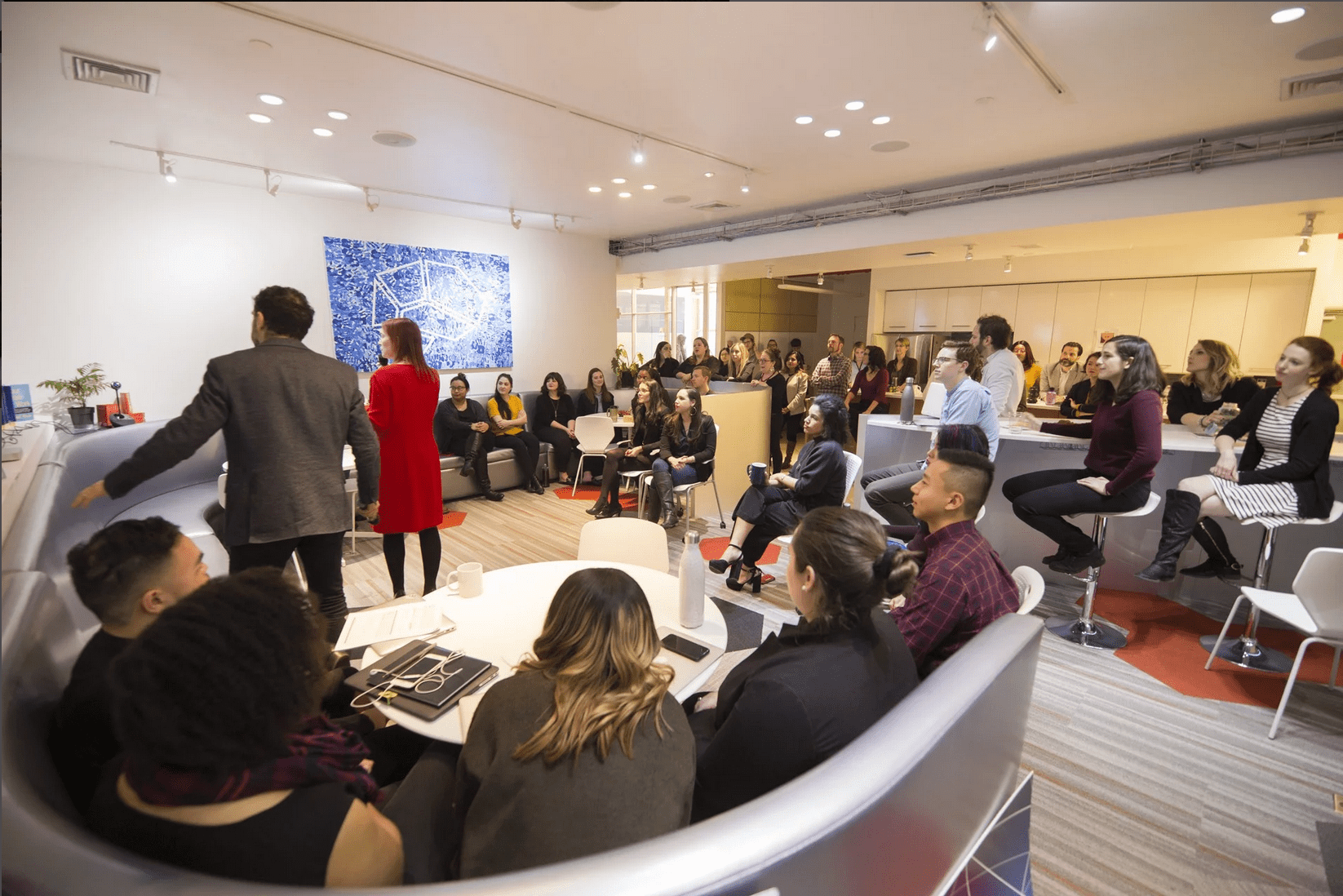After years of corporate retreats being on hold, many companies are starting to gear back up and plan getaways in destination cities such as Vegas or heading to mountains or beaches in hopes of boosting morale and productivity. Software company Teampay opted for a retreat in Mexico City earlier this year, while Salesforce unveiled its own Trailblazer Ranch retreat area in 2022.
Although the pandemic has made it clear the majority of employees prefer to work from home at least part of the time, companies are turning to corporate retreats to foster in-person bonding, engagement, and creativity in a hybrid work world. Since pandemic restrictions have ended, many companies have begun hosting corporate retreats full of adventures, fairs, and special guests. “We’ve been seeing a lot of energy around being in the same room with somebody that you work with,” says Craig Sherman, NLI’s global insight design manager.
Although companies hold retreats for a variety of reasons, the two major benefits are building stronger in-groups and fostering powerful insights. By bringing people together for both work-related and social activities, companies can help their employees get to know each other better and feel a greater sense of relatedness. This, in turn, can make everyone feel included and part of an in-group united under shared organizational goals. In addition, retreats can be used to brainstorm solutions to challenges and dilemmas, and when insights — or aha moments — happen, teams can help recognize and leverage them.
Retreats have the power to achieve all of these things, so long as you choose your goal carefully and design the entire retreat with that in mind. Here’s how to plan a retreat to maximize insight and increase the likelihood of sustained improvements to company culture.
Define your “why”
You’ve probably heard a friend who’s been in the workforce for a while reminiscing about a retreat the company held in the 1990s, whisking high-level employees away to a tropical beach. While successful retreats can happen on a beach, they need to have a definitive purpose. “Get clear with what you’re looking to achieve and have that front of mind,” Sherman says. Be sure to set a goal for the gathering that’s straightforward and challenging but easy to remember, such as building a greater sense of psychological safety for all employees or brainstorming ideas to increase sales.
Once you’ve defined your goal, let that influence everything you put into the retreat. Start with an interactive project or discussion that gets everyone thinking about how to approach the goal. For example, one company Sherman worked with started by breaking into groups and creating a recipe for the company’s ideal leader. They designed leaders by combining ingredients like they might order a salad, Sherman says. “You have your foundational ingredient, your dressing, and your toppings.”
With that ideal in mind, they spent the next few days building skills to become those leaders and pass those skills to other managers in the company. “They had something really memorable that showed a North Star and guided the rest of the conversation,” Sherman says.
Understand the power of space
Instead of jamming the schedule full, give space for people to talk and reflect — one of the most important steps in forming insights. In addition to letting people’s minds wander a bit, it also provides time for employees to have deeper, informal, one-on-one conversations inspired by the group discussions.
Recreation is another way to unlock the power of breaks. Walking is known to enhance your creative output; one study found that people were able to come up with 60% more unique uses for common objects when they were walking than when they were sitting.
If the schedule allows, plan for the retreat to last for at least two days, so participants can sleep on the ideas that come up the first day and revisit them on the second. Like walking, sleep is known to nurture creative problem-solving. When you sleep, your brain cycles through memories of the day, identifying patterns and themes. Then, as you fall into a deeper phase of sleep, your brain activity syncs up, and unexpected connections can arise between brain cells. New ideas can connect with older memories that your conscious brain might not have associated with one another during wakefulness.
Revisit ideas
Once you’ve built in time for participants to mull over discussions and consider unique connections outside of formal conversations, it’s time to bring them back together. It’s ideal “if you can design it so that over the course of your multiple-day event, you’re circling back on a topic again and again,” Sherman says, “so people can go to sleep and have their unconscious brain continue to think about the initial discussion topic and have new insights pop into their heads.”
If your retreat was designed with two or three goals, you can rotate the discussions so you address each one once, then come back and revisit them. Alternatively, if your retreat has a single goal, you can start building a list of ideas that need further exploration and leave some time open on the last day of the retreat to return to those ideas.
End with clear next steps
When the retreat ends, participants need a clear plan of action to ensure they can effectively translate insights from the meeting to their departments and teams. There are many ways to do this. Sometimes, it’s as simple as structuring emails that leaders can send to their teams.
In other cases, teams come up with a company-wide social media campaign. This can include internal emails and posts on social accounts that create momentum around the goals the leaders addressed at the retreat. In one case, Sherman says, leaders who attended the retreat recreated a sort of “ice bucket challenge.” One leader created a brief video of herself stating how she intended to achieve the goal and ended the video by nominating another leader to make their own video, and so on. “These strategies help you really ensure that you’re aligned together as a group on what that communication is after the event to the rest of the organization,” Sherman says.
Corporate retreats can make a big difference in improving company productivity and culture as long as they’re planned with purpose in mind. You might not even have to hire Taylor Swift or plan a zip lining adventure to make an in-person company gathering worthwhile.






